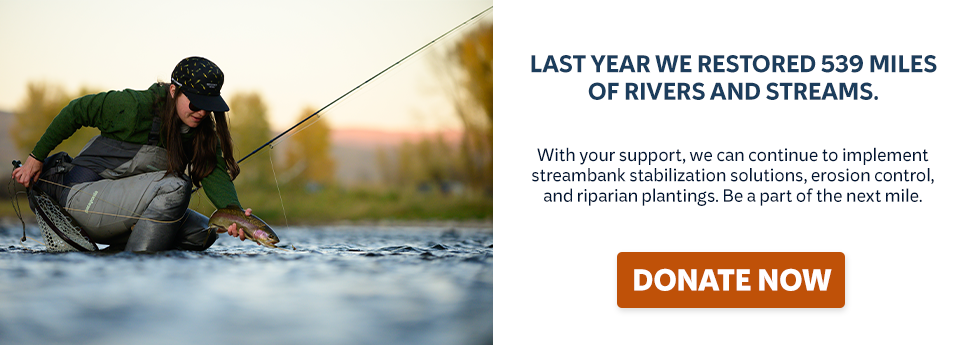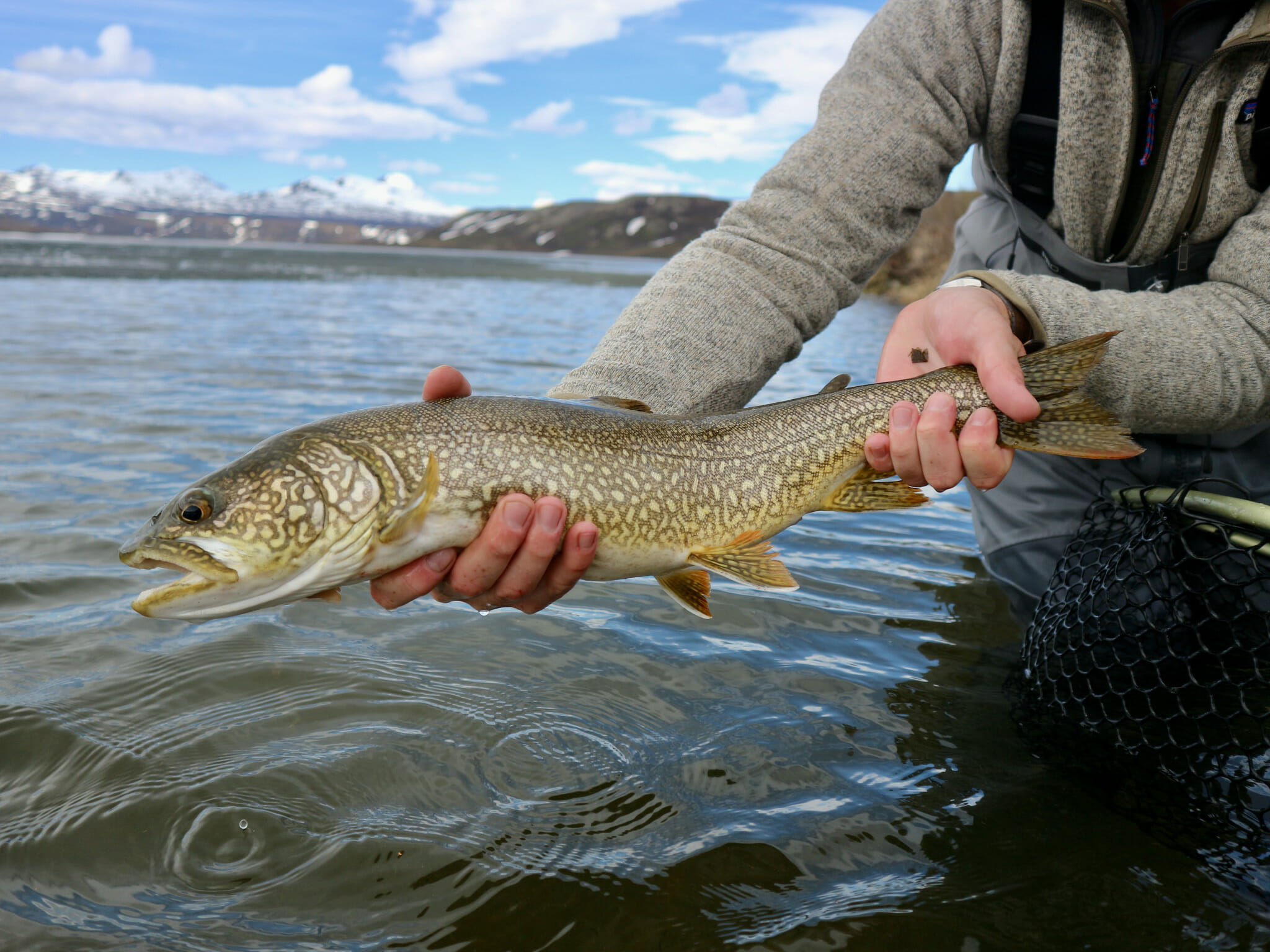Alaskan lake trout (Salvelinus namaycush)
Species summary and status: Lake trout have a body shape similar to that of trout and salmon. They generally have small cream or yellow, irregular shaped spots on a silvery-to-dark background. Males and females are similar, with males having a slightly longer, more pointed snout. Lake trout can be distinguished from other char by the absence of pink spots and their deeply forked tail. A breeding male has dark stripes on its side, and lacks the red or orange exhibited by Dolly Varden and Arctic char. There is usually a white leading edge on the pectoral, pelvic, and anal fin. Alaska lake trout can live longer than 50 years but more typical maximum ages are around 20 years. The maximum size attained in some Alaskan populations probably exceeds 50 pounds, and 8- to 10-pound fish can be taken in many of the state’s fisheries.
In Alaska, lake trout inhabit the deeper lowland lakes along the central Arctic coastal plain, as well as waters in the Brooks Range and Alaska Range. They are not found in the Yukon-Kuskokwim lowlands or the coastal drainages of Southeast Alaska. Lake trout inhabit clear, mountain lakes in northern Alaska as well as turbid glacial lakes on the north side of the Chugach Range and Kenai Peninsula.
Lake trout prefer large, deep, cold lakes in which they spend their entire lives. Spawning takes place over clean, rocky lake bottoms in September or October. Lake trout do not excavate a redd but instead broadcast spawn over the spawning bed. Males reach the spawning sites before the females each year and each evening. Spawning takes place at night with peak activity occurring after dusk.
Little is known about the early life history of lake trout, which are thought to be reclusive while feeding on plankton during their first few years of life. Spawning occurs for the first time after five to eight years. Lake trout spawn every other year or less frequently in northern Alaska, while in more southern Alaskan populations, such as those on the Kenai Peninsula, spawning may occur annually.
Lake trout growth varies from place to place depending on diet, water temperature, altitude and genetics.
The diet of lake trout varies with the age and size of the fish, locality, and the food available. Food items commonly include zooplankton, insect larvae, small crustaceans, clams, snails, leeches, several kinds of fish, mice, shrews, and even occasional young birds. When available, lake trout may feed extensively on other fish such as whitefish, grayling, sticklebacks, and sculpins.
Looking forward: The lake trout population is considered sustainable and healthy in Alaska. In the lower 48, lamprey predation and overfishing or overexploitation by commercial fisheries has taken their toll. Because of the long life span of lake trout, most of the biomass of a population will consist of fish five to 15 years of age or older. If these large fish are removed in a commercial or sport fishery, it will take several years to replace them and restore the biomass to its original abundance. Production rates are low in lake trout populations, making them vulnerable to overfishing. Overexploitation is always a threat to any species. With continued proper management and sound stewardship, the lake trout will be available for future generations.
Lake trout support important recreational fisheries in Alaska roadside and remote lake systems. The sport harvest of lake trout in Alaska has decreased during the last two decades while catch has remained relatively stable. Conservative fishing regulations instituted are most likely responsible for the harvest reduction. Fishing regulations most often consist of a minimum-size limit and a bag and possession limit of one or two fish per day. Minimum length restrictions usually reflect the size at which at least 50 percent of the population is sexually mature, and are usually enacted to protect a component of the spawning population while maintaining the opportunity for harvest of large fish. Because of the long life span of lake trout, most of the biomass of a population will consist of fish 5 to 15 years of age or older. If these fish are removed, it takes several years to replace them and restore the biomass to its original abundance. Due to their low productivity and vulnerability to overfishing, mortality associated with catch-and-release fishing must be considered in managing lake trout fisheries in Alaska, especially with any increases in angling for sport.
Data compiled from:



